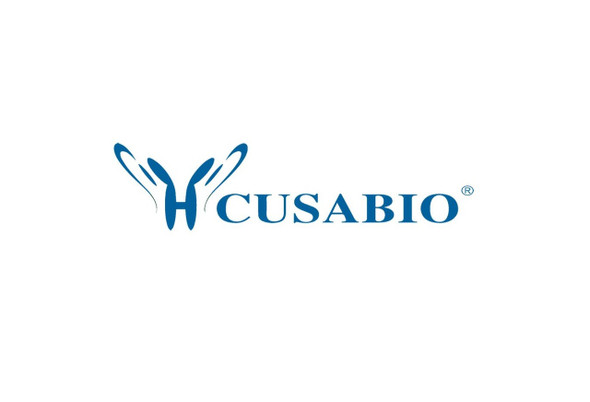Cusabio Mus musculus Recombinants
Recombinant Mouse Nuclear receptor subfamily 5 group A member 2 (Nr5a2) | CSB-EP016066MO
- SKU:
- CSB-EP016066MO
- Availability:
- 13 - 23 Working Days
Description
Recombinant Mouse Nuclear receptor subfamily 5 group A member 2 (Nr5a2) | CSB-EP016066MO | Cusabio
Alternative Name(s): Liver receptor homolog 1 (LRH-1) (Lrh1)
Gene Names: Nr5a2
Research Areas: Developmental Biology
Organism: Mus musculus(Mouse)
AA Sequence: MSASLDTGDFQEFLKHGLTAIASAPGSETRHSPKREEQLREKRAGLPDRHRRPIPARSRLVMLPKVETEAPGLVRSHGEQGQMPENMQVSQFKMVNYSYDEDLEELCPVCGDKVSGYHYGLLTCESCKGFFKRTVQNQKRYTCIENQNCQIDKTQRKRCPYCRFKKCIDVGMKLEAVRADRMRGGRNKFGPMYKRDRALKQQKKALIRANGLKLEAMSQVIQAMPSDLTSAIQNIHSASKGLPLSHVALPPTDYDRSPFVTSPISMTMPPHSSLHGYQPYGHFPSRAIKSEYPDPYSSSPESMMGYSYMDGYQTNSPASIPHLILELLKCEPDEPQVQAKIMAYLQQEQSNRNRQEKLSAFGLLCKMADQTLFSIVEWARSSIFFRELKVDDQMKLLQNCWSELLILDHIYRQVAHGKEGTIFLVTGEHVDYSTIISHTEVAFNNLLSLAQELVVRLRSLQFDQREFVCLKFLVLFSSDVKNLENLQLVEGVQEQVNAALLDYTVCNYPQQTEKFGQLLLRLPEIRAISKQAEDYLYYKHVNGDVPYNNLLIEMLHAKRA
Source: E.coli
Tag Info: N-terminal 10xHis-tagged and C-terminal Myc-tagged
Expression Region: 1-560aa
Sequence Info: Full Length
MW: 71.5 kDa
Purity: Greater than 90% as determined by SDS-PAGE.
Relevance: Nuclear receptor that acts as a key metabolic sensor by regulating the expression of genes involved in bile acid synthesis, cholesterol homeostasis and triglyceride synthesis. Together with the oxysterol receptors NR1H3/LXR-alpha and NR1H2/LXR-beta, acts as an essential transcriptional regulator of lipid metabolism. Plays an anti-inflammatory role during the hepatic acute phase response by acting as a corepressor: inhibits the hepatic acute phase response by preventing dissociation of the N-Cor corepressor complex. Key regulator of cholesterol 7-alpha-hydroxylase gene expression in liver. May also contribute to the regulation of pancreas-specific genes and play important roles in embryonic development. Activates the transcription of CYP2C38.
Reference: "Structural basis for ligand-independent activation of the orphan nuclear receptor LRH-1." Sablin E.P., Krylova I.N., Fletterick R.J., Ingraham H.A. Mol. Cell 11:1575-1585(2003)
Storage: The shelf life is related to many factors, storage state, buffer ingredients, storage temperature and the stability of the protein itself. Generally, the shelf life of liquid form is 6 months at -20?/-80?. The shelf life of lyophilized form is 12 months at -20?/-80?.
Notes: Repeated freezing and thawing is not recommended. Store working aliquots at 4? for up to one week.
Function:
Involvement in disease:
Subcellular Location:
Protein Families:
Tissue Specificity:
Paythway:
Form: Liquid or Lyophilized powder
Buffer: If the delivery form is liquid, the default storage buffer is Tris/PBS-based buffer, 5%-50% glycerol. If the delivery form is lyophilized powder, the buffer before lyophilization is Tris/PBS-based buffer, 6% Trehalose, pH 8.0.
Reconstitution: We recommend that this vial be briefly centrifuged prior to opening to bring the contents to the bottom. Please reconstitute protein in deionized sterile water to a concentration of 0.1-1.0 mg/mL.We recommend to add 5-50% of glycerol (final concentration) and aliquot for long-term storage at -20?/-80?. Our default final concentration of glycerol is 50%. Customers could use it as reference.
Uniprot ID: P45448
HGNC Database Link: N/A
UniGene Database Link: N/A
KEGG Database Link: N/A
STRING Database Link: N/A
OMIM Database Link: N/A






